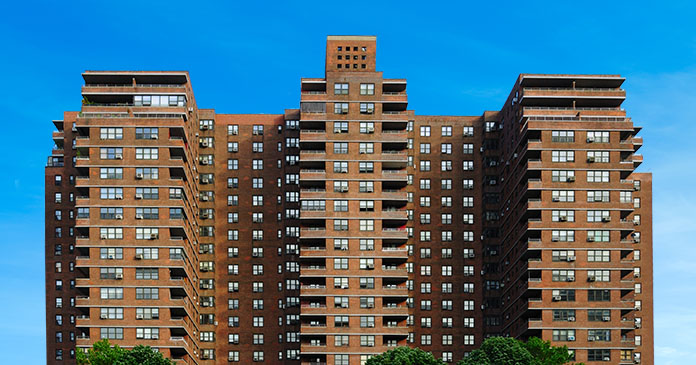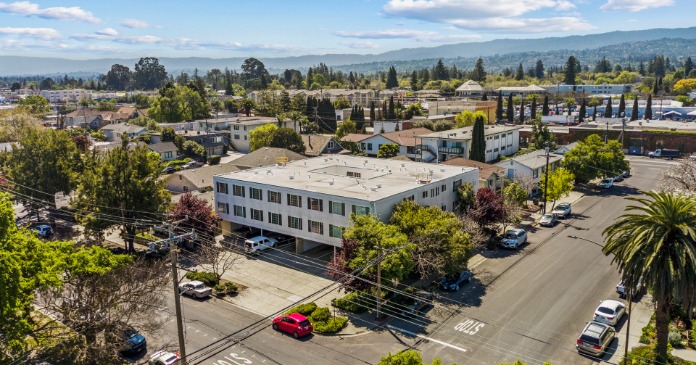The growing plan to save NYC’s public housing is heating up.
In 2023, workers will finish renovations at thousands of public housing apartments in New York City.
That might sound like a lot—but it’s just a fraction of 177,000 public housing apartments owned and managed by the New York City Housing Authority (NYCHA).
Advocates and the government overseers watching NYCHA seem pleased anyway.
In 2018, the Authority announced a plan to recapitalize and rehabilitate 62,000 apartments by 2028 through its Permanent Affordability Commitment Together (PACT) program. That’s about third of its 177,000-unit portfolio. Five years later, NYCHA is finally quickening its progress towards that goal.
“PACT program has gained steam,” says Alec Goodwin, housing and buildings budget and policy analyst for the New York City Independent Budget Office (IBO), just one of the city, state and federal watchdogs with its eye on NYCHA.
In addition, in June, 2022, New York State created its new Public Housing Preservation Trust with the authorization to recapitalize 25,000 public housing apartments. NYCHA seems likely to eventually pursue the recapitalization of a total of 110,000 units of public housing through the Trust, according to Goodwin.
That’s nearly the rest of NYCHA’s 177,000-unit portfolio. NYCHA is working this year to identify a few developments for the first round of the Trust.
For any of these plans to work, NYCHA must earn the trust of its residents. Each public housing property must vote to approve the plans before work can begin.
“In the beginning there was a lot of skepticism and a lot of suspicion,” says Jonathan Gouveia, executive vice president of real estate development for NYCHA. “Now we have residents coming to us actually asking for it—saying they would like to see PACT at their development.”
Big problems at big housing authority
NYCHA struggled for years to keep its apartments fit for human habitation. Boilers failed on the coldest days of winter. Elevators stopped running, sometimes for months at a time. The Authority now has a backlog of more than 680,000 work orders, the highest that number has ever been, according to the New York City Comptroller, another watchdog circling the beleaguered Authority.
NYCHA’s years of trouble are no surprise. Federal public housing is supposed to be maintained with funds from the federal government. For decades, Congress provided a fraction of the money the U.S. Dept. of Housing and Urban Development (HUD) estimated housing authorities need.
Some the most notorious housing projects in other cities, like Cabrini-Green in Chicago and Orchard Park in Boston, were demolished over the years under federal programs like HOPE VI, which replaced them with new privately-owned and managed properties. These properties often mixed newly-built public housing with new low-income housing, apartments renting at market rates and even for-sale housing. Touted as successes by many from mayors to housing officials, HOPE VI redevelopments often ended with fewer units of public housing than they started.
“Other cities have demolished significant numbers of buildings and developments and that led to displacement,” says NYCHA’s Gouveia.
NYCHA plans to finally rehabilitate its crumbling public housing without kicking residents out of their homes. “First and foremost the goal is absolutely never to displace,” says Gouveia.
Apartments renovated through both PACT and the new Public Housing Preservation Trust also get much more than a fresh coat of paint and some new appliances. These programs represent New York’s implementation of the federal Rental Assistance Demonstration program. Both convert unpredictable public housing money into a steady stream of federal Sec. 8 rental subsidy.
Privately-owned affordable housing properties have been depending on project-based Sec. 8 subsidies for decades. Unlike HUD’s commitments to conventional public housing, their long-term contracts with HUD have never been broken. Perhaps that because the nation’s largest banks—from Citigroup to Bank of America to Goldman Sachs—have invested billions in affordable housing properties with project-based Sec. 8 contracts.
Once a property has converted from public housing funding to Sec. 8 funding, it can borrow money to repair its apartments and can depend on the steady stream of Sec. 8 income to maintain those apartments. In New York City, PACT recapitalizations will address $13 billion in capital needs.
As of March, 2023, private developers partnered with NYCHA had finished construction at 5,800 apartments converted to Sec. 8 funding through PACT, starting with NYCHA’s Ocean Bay project in Queens, N.Y.
“We are actually making very good progress,” says Gouveia. “We have another 10,000 and change that are currently under construction, with several thousand of those being completed in 2023 into 2024. We have another 20,000 that are in some stage of pre-development.”
These renovations do not use the most common sources to funding typically used to develop and redevelop affordable housing: the low-income housing tax credit.
“The dollar value of our projects is huge— we would end up consuming the whole allocation for the city,” says Gouveia.
Instead, the City of New York has made about $1.5 billion available to these redevelopments.
“Thus far in the deals that we have done we have been fortunate in that just the combination of the subsidy versus the rents that we’re able to get and the level of deterioration they’ve been, they’ve penciled out without needing any additional money,” says Gouveia.
These PACT properties are being renovated by private developers partnered with NYCHA and will be managed by private companies working for NYCHA in the future. NYCHA continues to own the land and the buildings and does “relationship work” with the residents, says Gouveia. “We do their annual rent certifications.”
NYCHA has learned a lot from completing PACT renovations at thousands of apartments. “The biggest lesson learned absolutely is communication,” says Gouveia.
“When PACT was first created, we met with residents, put out requests for proposals, teams were selected and then we would go to the developments and say ‘you know we brought on this great team,’” says Gouveia. “There was an opportunity to do deeper engagement.”
Resident review committees now review renovation proposals and interview and help NYCHA select development teams. “We developed a very robust resident engagement process,” says Gouveia.
The Trust will go further to win over residents who might be skeptical of redevelopment. Instead of hiring private developers and managers, the renovation work will be completed by the Trust, which is a new entity controlled by NYCHA. NYCHA expects the Trust to raise about $15 billion of the $18 billion still needed to address the full scope of capital needs for 110,000 units.
“PACT partially privatizes certain aspects of pubic housing,” says IBO’s Goodwin. “The Trust maintains the public nature of public housing. That is something that residents care about.”
So far, these renovations have fixed up existing public housing buildings without tearing them down. However, as they have become more confident that they will not be displaced by rebuilding, the residents of at least one NYCHA property, Fulton and Elliott-Chelsea, have begun to ask questions.
“There are residents who actually started to ask Essence Development [NYCHA’s development partner at the property] why they can’t we get new buildings,” says Gouveia.
Author Bendix Anderson












